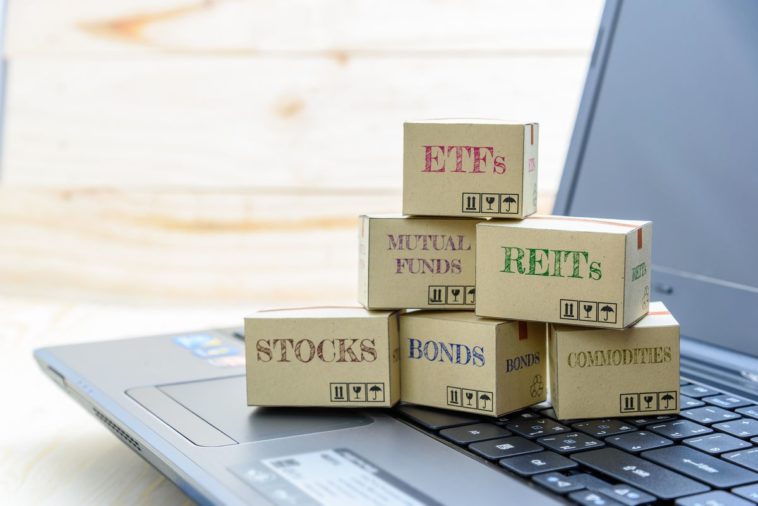ETFs are healthier retirement options, so why don’t more advisers use them?
/cloudfront-us-east-1.images.arcpublishing.com/tgam/NVE6SLFZ3RE5JASO4YEGFHIC4Q.jpg)
When I was in elementary school in the late 1970s, many of my teachers smoked. I remember knocking on the staff room door at lunch and, as the door opened, a wall of smoke hit my face.
These days, teachers can’t smoke in schools. Even if they could, few would. It’s medically proven to shorten people’s lives. The medical community was likely among the first to butt out: They probably saw the science first.
You might think financial advisers have the same forward-thinking when it comes to what’s good for them in their own industry. But if they did, why would so many still recommend actively managed funds when index funds and ETFs are healthier retirement options? They perform much better because of their lower fees.
According to SPIVA – S&P’s Indices Versus Active semi-annual scorecard comparing the performance of actively managed funds to that of their benchmark indices – about 90 per cent of Canadian actively managed funds underperformed the S&P/TSX Composite Index over the 10 years ending June 30, 2020.
Of Canada’s actively managed funds that invest in U.S. stocks, more than 95 per cent of them underperformed the U.S. stock index over the same period. Even during years when stocks crash (like 2008), most actively managed funds do worse than their indexed counterparts.
Some actively managed funds beat their benchmark indexes, much like some smokers (like George Burns) live a long time. But advisers usually recommend them after they have performed well. And as the SPIVA scorecard shows, most actively managed funds that win during one measured period underperform the next.
A good adviser provides plenty of wealth management benefits. A rare few will even build you a portfolio of low-cost index funds. But when it comes to investing, most financial advisers are like dogs chasing tails – even with their own, personal money, according to researchers Juhani Linnainmaa, Brian Melzer and Alessandro Previtero in their report The Misguided Beliefs of Financial Advisors, recently published in The Journal of Finance.
Two Canadian financial institutions helped them assess data from more than 4,000 financial advisers and about 500,000 clients between 1999 and 2013. The financial companies provided personal trading and account information for most of their advisers. Of the 4,688 advisers, about 70 per cent (or 3,282) had their personal portfolios with their firms – most of those who didn’t were starting their careers.
The advisers earned fee rebates on the mutual funds they put into their own accounts, but that didn’t help them. Over the 15-year study, they performed as badly as their clients, trailing equal-risk adjusted benchmarks of indexes by about 3 per cent per year. In other words, they lagged by about 55 per cent after just 15 years. High fees explained part of their poor showing: They bought funds that cost more than 2 per cent annually. And their tendency to chase past winners (like dogs chasing tails) explained the rest of their poor performance.
If you want to thrash the performance of most financial advisers, build a diversified portfolio of low-cost ETFs. Choose an allocation and stick to it. The iShares Core S&P/TSX Composite Index (XIC-T), with a management expense ratio (MER) of just 0.06 per cent, provides exposure to Canadian stocks. XIC has returned about 8 per cent over the past year, and has seen an annualized return of 11 per cent over the past five years.
Vanguard’s FTSE Global All Cap ex Canada ETF (VXC-T), with an MER of 0.26 per cent, would add global stock exposure. VXC has returned about 16 per cent over the past year and has seen an annualized return of 11 per cent over the past 5 years. A Canadian bond ETF, such as the iShares Core Canadian Universe Bond ETF (XBB-T), costs just 0.10 per cent. XBB has returned about 7 per cent over the past year and 4 per cent annually over the past five years.
Even simpler, you could buy an all-in-one portfolio ETF. Total costs would range from MERs of about 0.17 per cent to about 0.27 per cent. And in each case, the fund company would rebalance the internal holdings to maintain a consistent allocation.
If you’re wondering why most advisers don’t do this with their own money, Benjamin Felix, a financial planner with PWL Capital believes it may be because the Certified Financial Planner (CFP) education program is designed to ensure that professionals have a broad understanding of 12 topics core to the financial planning process. “Investments is one of those topics,” Mr. Felix says, “but there is no requirement to fully understand the evidence in favour of buying and holding low-cost index funds.”
It’s easy to be cynical, suggesting that advisers stuff actively managed funds into their clients’ accounts to boost trailer fees and commissions for themselves and their firms. But their personal holdings make something clear. In most cases, they simply don’t know what they don’t know.
Published at Tue, 12 Jan 2021 11:00:00 +0000





Comments
Loading…